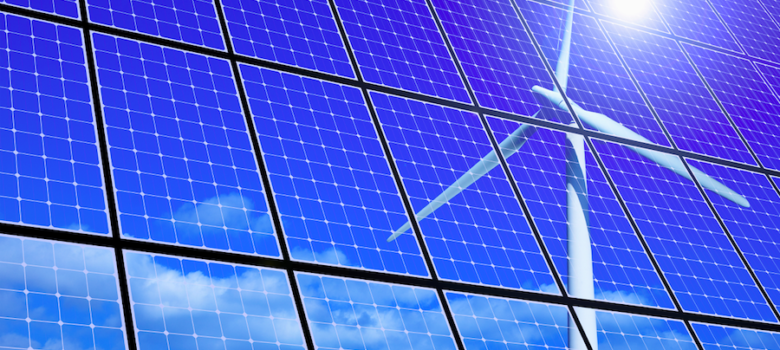
If you’ve heard of solar but you’re unsure of the science, or you want to find out more about what makes technologies sustainable, we’ve put together some quick facts about the main renewables used in the UK.
Using naturally- occurring fuel does not necessarily mean a technology is renewable. Coal comes from natural sources yet does not regenerate and it also pollutes the atmosphere. As a result, coal power plants, which have traditionally provided much of the UK’s electricity, are being shut down. The difference with renewables is that whatever is being harnessed (e.g. sun, wind, waves) is not an expendable resource. They do not give off carbon emissions and have minimal – or no- harmful effects on the environment.
Although renewables have limitations, they form a viable alternative to fossil fuels and nuclear energy and are arguably an underused resource in the UK.
Wind
Wind power is one of the oldest and best known renewable technologies. Everyone knows how they work, but not everyone knows how effective they could be. The same amount of energy generated by all the power plants in the world could be produced by covering 1% of the planet’s land mass with wind turbines.
Wind power does have limitations; some people complain that turbines look ugly, and also they only work at certain wind speeds. Advancements in offshore wind combat both of these problems. Putting turbines far out to see means they are less visible, and that they capture much higher wind speeds.
Industry experts are confident that, with government backing, offshore wind could generate electricity as cheaply as fossil fuels. However the government have shown their support to lie firmly with fossil fuels.
Solar
This can be divided into two: solar PV (photovoltaics) and solar thermal. As well as being used on a domestic scale, there are also several solar farms in the UK.
Put very simply, photovoltaic (PV) modules are made partially from a semiconductor, which acts as an electrical field, positive on one side and negative on the other. When light energy hits this, electrons come loose from the protons in the semiconductor. Conductors attached to the positive and negative sides form an electric current.
Electricity produced from solar PV panels can be used to directly power appliances, or stored for later use.
An important development in solar technology is BIPV, or building-integrated photovoltaics. This is solar glass, which in a couple of years is expected to be almost fully transparent, meaning it can be used in place of windows to power buildings.
Solar thermal (also known as solar heating) harnesses the energy provided by the sun to provide thermal energy to heat water. This can be used to supplement domestic hot water (although the temperature might need to be topped up by a boiler), larger stores of water (like swimming pools), underfloor heating and for space heating/cooling.
A well-designed solar heating system can provide approximately 55% of your annual hot water requirement in your house. In winter, it won’t normally produce enough hot water for a household, but for some people it provides all their hot water in summer.
The downside of solar technology is that it is dependent on weather conditions. Clearly, it only generates power during daylight hours, and less so if there is cloud cover. However, solar is moving into a new phase with the development of battery storage. New battery storage systems are allowing people to keep their generated electricity, rather than using it straight away. Whereas before, any surplus would have to be sent to the National Grid, this means you can store it for use in the evenings or when the sun isn’t shining, meaning in some cases you can be almost entirely reliant on your own free renewable energy!
Tidal
Tidal technology is actually quite simple; underwater turbines capture the kinetic motion of ocean tides and activate a generator, which produces electricity. It works best in places with strong tidal currents, such as the Severn estuary, where the world’s first tidal power plant is currently fighting through planning stages.

There are lots more renewable technologies out there, and several in development. Read about them here and here. Or if you are interested in finding out more about any of the technologies already mentioned, visit their individual technology pages.
Think we missed something? Do you have a different opinion?
Comment below to get your voice heard…













what about biomass renewable energy ?